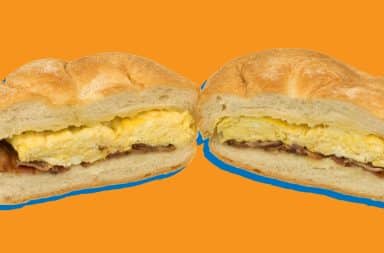Mountain Dew synthesis is more art than science. While it happens in a laboratory and a lot of mice die in the process, it mostly includes a lot of trial and error.
For every success story like Baja Blast, there is an abandoned, neon pool of Baja Bombs. Let us explore some of these fallen fountain drinks.
Mountain Dew: Codeine Jubilee
This drink was a promotional tie-in for “Like a G6” by Far East Movement but proved to be as short-lived as the hit single it tried to hype.
Requiring a prescription for a 12-pack proved to be a huge impediment to sales. The drowsiness it caused ran counter to the Mountain Dew image. Within months it vanished from CVS pharmacy shelves everywhere.
Farmer Fuel
After the success of Gamer Fuel, the soft drink juggernaut tried the same strategy on the agriculture sector. Combining the citrus kick of lemonade with the zest of Skole’s chewing tobacco, Farmer Fuel was to be biodiesel for the human body.
Unfortunately, the potent blend caused people to throw up in their cornfields. After a failed attempt to sell the drink as pig feed, Pepsico retired it with little fanfare.
Literally Just Corn Syrup
After Gamergate, Mountain Dew needed to rethink their image. “Literally Just Corn Syrup” took a page from the Dominos' playbook and owned up to their position as the obscene graffiti on the food pyramid. An intern scribbled “Literally Just Corn Syrup” on each label-less package in Sharpie.
The campaign died after a class-action lawsuit from confused consumers. While accurate, the description was easy to mistake for Surge.
Kickin’ Kidney-Stone
Kickin’ Kidney-Stone had a limited run for April Fool’s Day in 1988. It kept the distinctive green color, but the concoction itself was a mixture of calcium powder and No-Doze.
Mountain Dew avoided litigation thanks to the disclaimer printed on the inside of the can. Nonetheless, the wave of hospitalizations discouraged introducing new flavors as a joke.
Turnip Heaven
Mountain Dew tried their hand at health-conscious drinks with Turnip Heaven. Artisans lovingly pulped the finest turnips California had to offer and forced them through a flannel sieve. They then blended the juice with fair-trade Colombian java beans and bottled it in a stone jar.
At $48 per unit, Turnip Heaven was a luxury item few could afford. After a 3-month run at Whole Foods, it withdrew to the root cellar of history.
Am-BRO-sia
Am-BRO-sia was the lovechild of a mad bromance between Mountain Dew and Natural Lite. It was a hit upon release, becoming a staple at fraternal hazing across the country.
It had gone flat and skunky by the following semester, but its memory lives on. Collector’s editions came with a pair of Sperry’s and a flatbill Mountain Dew snapback. These still fetch a hefty price on eBay.
Flamethrower
The beverage giant was not deterred by the tepid response to Cinnamon Pepsi. They tried again with a Capsaicin-infused lemon-lime drink that also worked as paint-stripper. This hellish brew was Flamethrower, named as a challenge to consumers.
Although they scrapped it for qualifying as “pepper spray” from a legal standpoint, Flamethrower was not a total loss. It did make history as the first soft drink detained at The Hague.
Steak Juice
Steak Juice is one of the more bizarre chapters in Mountain Dew history. Some claim it was a foolhardy effort at a “manly” soft drink. Others believe it was an industrial accident that made its way to shelves.
There is little evidence that these cans of carbonated grill drippings ever existed. Only the acne scars that mark an entire generation of rural Arkansans tell the tale.
Axe: Mountain Dew
Axe: Mountain Dew tried to capture the essence of Axe body spray in a consumable form. It proved identical in both scent and function, in that it repelled all romantic interests.
Over time the lines blurred, and people began using the products interchangeably. To this day, no one is sure that Axe is not just Mountain Dew in spray form.
Sanitize
A relative newcomer on the scene, Pepsico piloted Sanitize as a “cleaner” take on the traditional Dew flavor. Transparent in color, it was a stark departure from the cloying sugar-rush that defined the brand for decades.
It was also just Aquafina in a different package, which is probably why it failed to gain traction.


